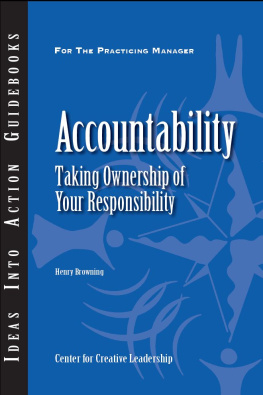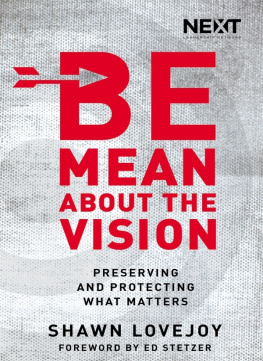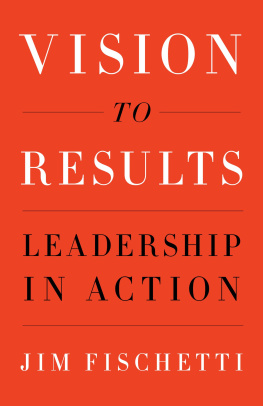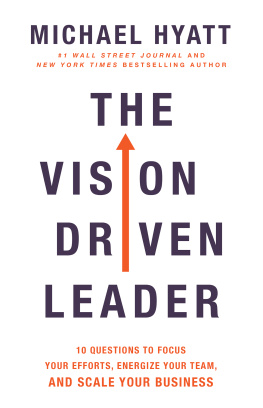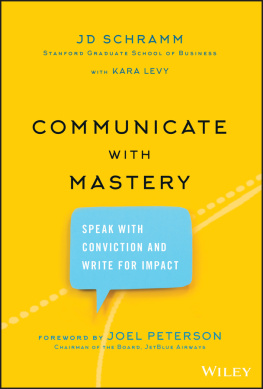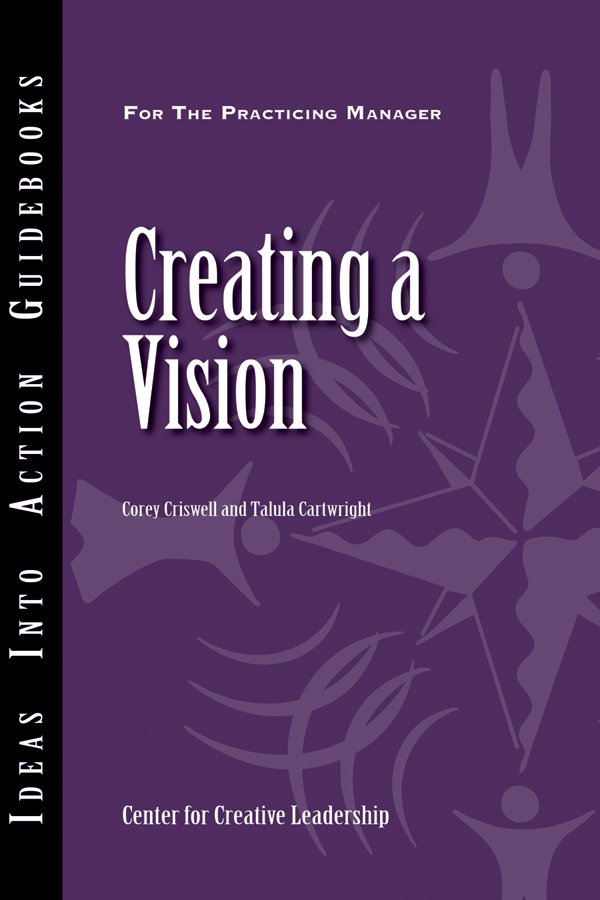Ideas into Action Guidebooks
Aimed at managers and executives who are concerned with their own and others development, each guidebook in this series gives specific advice on how to complete a developmental task or solve a leadership problem.
| LEAD CONTRIBUTORS | Corey criswell |
| Talula cartwright |
| CONTRIBUTORS | Anand Chandrasekar, Craig
Chappelow, Michelle Crouch,
David Loring, Ellen Van Velsor,
Philip Willburn, Meena Wilson,
Jeffrey Yip |
| DIRECTOR OF ASSESSMENT, TOOLS, AND PUBLICATIONS | Sylvester Taylor |
| EDITOR | Peter Scisco |
| ASSOCIATE EDITOR | Karen Lewis |
| WRITER | Rebecca Garau |
| DESIGN AND LAYOUT | Joanne Ferguson |
| CONTRIBUTING ARTISTS | Laura J. Gibson
Chris Wilson, 29 & Company |
Copyright 2010 Center for Creative Leadership.
All rights reserved. No part of this publication may be reproduced, stored in a retrieval system, or transmitted, in any form or by any means, electronic, mechanical, photocopying, recording, or otherwise, without the prior written permission of the publisher.
CCL No. 447
ISBN No. 978-1-60491-075-9
Center for Creative Leadership
Post Office Box 26300
Greensboro, North Carolina 27438-6300
336-288-7210
www.ccl.org/publications
pfeiffer.com/go/cclguidebooks

The Ideas into Action Guidebook Series
This series of guidebooks draws on the practical knowledge that the Center for Creative Leadership (CCL) has generated, since its inception in 1970, through its research and educational activity conducted in partnership with hundreds of thousands of managers and executives. Much of this knowledge is sharedin a way that is distinct from the typical university department, professional association, or consultancy. CCL is not simply a collection of individual experts, although the individual credentials of its staff are impressive; rather it is a community, with its members holding certain principles in common and working together to understand and generate practical responses to todays leadership and organizational challenges.
The purpose of the series is to provide managers with specific advice on how to complete a developmental task or solve a leadership challenge. In doing that, the series carries out CCLs mission to advance the understanding, practice, and development of leadership for the benefit of society worldwide. We think you will find the Ideas Into Action Guidebooks an important addition to your leadership toolkit.
Executive Brief
If you want to be an effective leaderat any levelyou should pay attention to vision. Leaders who communicate a strong vision are seen by their bosses and coworkers as more effective in several important areas than those who do not. The content of your vision affects employees perception of your organization. Your articulation of the vision affects their perception of your leadership effectiveness. Taken together, vision content and vision articulation give your employees, colleagues, and other stakeholders a powerful image of how good your organization is and how skilled you are as a leader.
Vision and Effective Leadership
If youre not a CEO, top executive, or business owner, you might not spend much time thinking about vision. Youre busy managing others, delivering on goals, implementing specific tactics, building a team, or focusing on financial performance. Creating a vision is not your priority.
But if you want to be an effective leader at any level, you should pay more attention to vision. Center for Creative Leadership (CCL) research suggests that leaders who communicate a strong vision are seen by their bosses and coworkers as more effective than those who do not (Willburn, Hackman, & Criswell, 2008; unless otherwise noted, all mentions of research in this guidebook refer to this study).
The research also shows that the content of a visionthe information itselfaffects employees perception of the organization. Your articulation of a visionhow you communicate the informationaffects employees perceptions of your leadership effectiveness. Taken together, vision content and vision articulation give your employees, colleagues, and other stakeholders a powerful image of how good your organization is and how skilled you are as a leader.
Whatever your leadership rolemanager of a small staff, project manager, department head, or up-and-coming executivedeveloping a vision is a powerful tool for achieving your goals.
Demystifying Vision
The process of creating a clear and compelling vision is not widely understood. At the organizational level, a team or task force may be deployed to create a vision statement and communicate it throughout the organization. The team members may revise a current vision statement or pull together input from a variety of stakeholders or develop a vibrant image for the organization. But do they have an effective vision in the end? All too often, the vision is relegated to a statement posted on the organizations Web site or in its annual report.
Vision Connections
Leaders who convey a strong vision are seen as more effective in several important areas than those who convey a weaker vision. Our research shows that a strong vision is correlated with
- the ability to lead change
- being dynamic
- competence in strategic planning
- being farsighted
- inspiring commitment
- being original
- having a strong executive image
These are leadership competencies that are particularly important during times of complexity, change, and crisis.
At the individual level, having vision is often cited as important or even measured as a valued competency by many organizations. As a leadership characteristic, having vision usually entails the ability to come up with a direction and the ability to sell that direction. But many people mistakenly believe that they dont have the ability to develop a compelling vision for their organizations, teams, or projects. Many of our senior-level program participants tell us that they arent good at vision or that you either have the vision or you dont. When they see how we have demystified the process of creating a vision, they are genuinely thankful to have a new approach to an essential but often vexing leadership process.
The remainder of this guidebook takes you through steps to develop or refine your vision.
Five Building Blocks
Earlier in this guidebook we note that the content of your vision establishes an image of your organization: Is it strong? Headed in a good direction? A good place to work? Involved in something that is important?
A close look at our research reveals that a compelling vision includes five content elements:
- the big idea
- the values
- the story
- the growth factor
- the change factor
These five elements are not just important for the overall organizational vision, which is typically set by the senior leadership team. They are just as relevant for team leaders, project managers, group directors, and even individual contributors. Heres why: Success in todays organizations requires some level of shared direction, alignment, and commitment among people in the organization. The more complex or broad-based the work, the more reliant we are on collaborative processes of leadership.




